What Weather Is Too Cold for Dogs
For exclusive access to all of our fitness, gear, adventure, and travel stories, plus discounts on trips, events, and gear, sign up for Outside+ today.
If you like to rough it in freezing temperatures and wet snow, your dog should too. "In general, a dog that thrives in a snowy climate has a dense coat that insulates them from the elements," says Bernadine Cruz, who has worked with arctic dogs as a trail veterinarian for the Iditarod, Yukon Quest, and John Beargrease sled-dog races. "Often, northern dog breeds will have a good foundation by virtue of stout furry paws that allow them to traverse icy terrain."
If you live in the mountains or are looking for a furry friend to keep you warm on those single-digit winter camping trips, these are the best dog breeds for cold-weather climates.
—Mattie Schuler
20. Akita
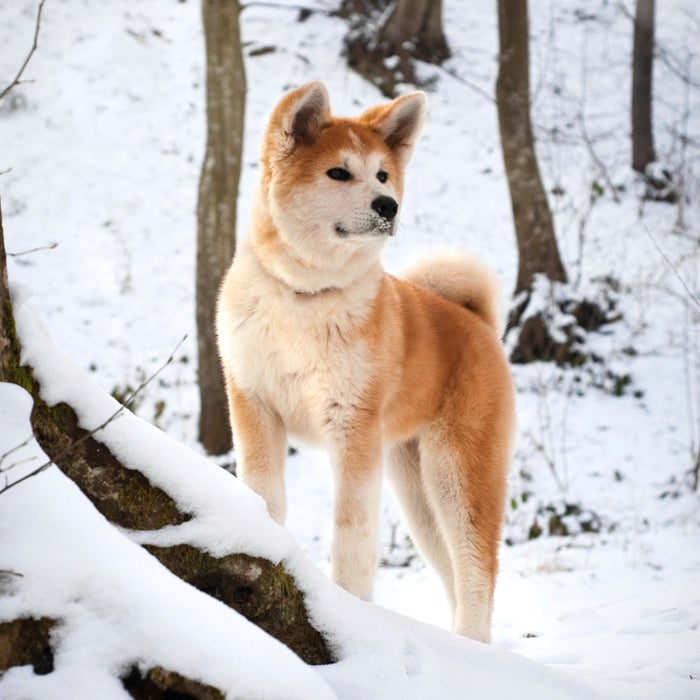
An Akita is truly a royal pup—hailing from Japan, this breed was once only owned by the Imperial family. Statues of the Akita were also given as gifts to new parents to bring health, happiness, and a long life. This dog, originally bred as a cold-weather hunting companion with a dense undercoat and harsh outer coat, can often be independent and stubborn, but will remain protective and loyal to its family.
19. Alaskan Malamute
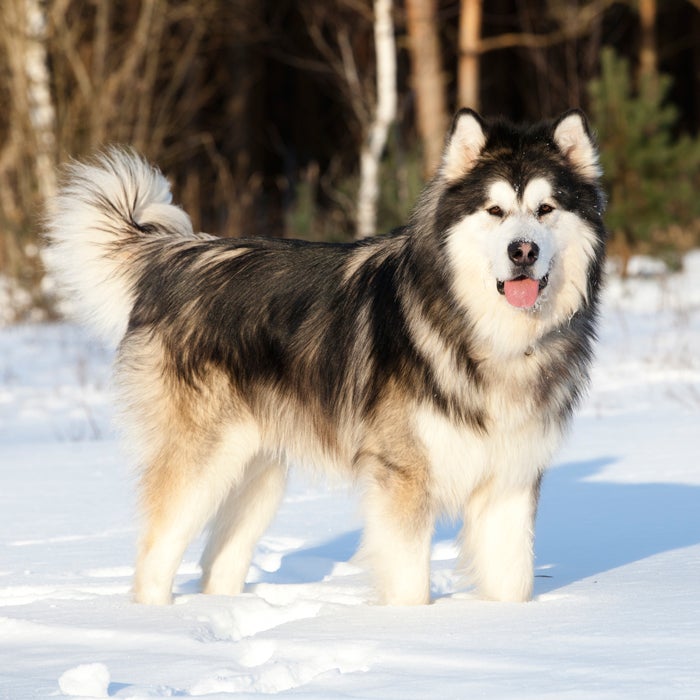
Bred to haul heavy loads, run, and roam, the Alaskan Malmute is the ultimate cold-weather canine. "The Alaskan Malamute is a great cold weather breed because of its origin—they come from Alaska and are the oldest and largest of the Arctic sled dogs, having been used for freighting in the Arctic," says Gina DiNardo, vice president of the American Kennel Club. "They have a thick, coarse coat that keeps them warm."
18. American Eskimo Dog
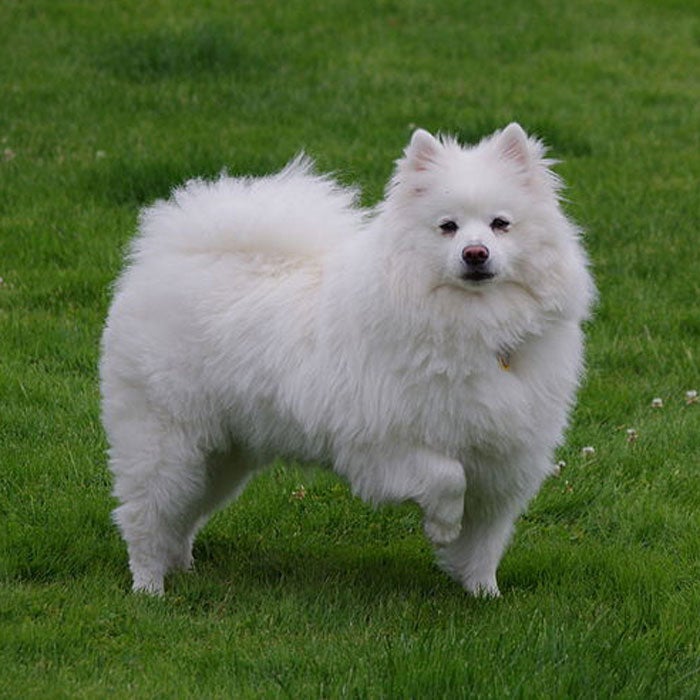
Originating from Germany, the American Eskimo was originally called the White German Spitz but was renamed after World War II, most likely for its white coat–not for any connection with Eskimos. Though this playful and compact and used to perform indoors with the Barnum and Bailey Circus, outdoor activity suits it much better; its coat resists soaking and thick ears stay warm in low temperatures.
17. Anatolian Shepherd
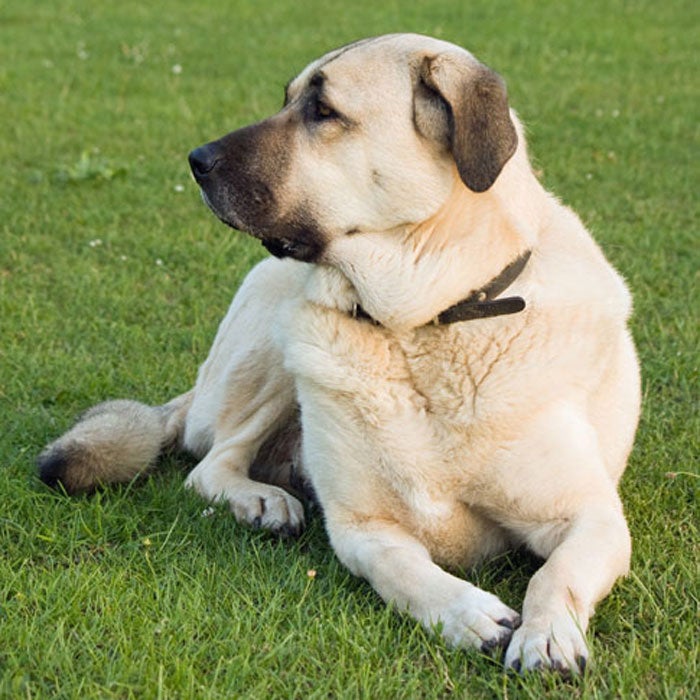
The Anatolian Shepherd is a serious mountain dog—the breed is rugged and tough, but still agile and able to handle long treks. Originally used as a flock guard in Turkey more than 6,000 years ago, this breed has low energy but is very protective—the dog should know who is boss from the beginning and will then welcome strangers that the owner introduces.
16. Bernese Mountain Dog
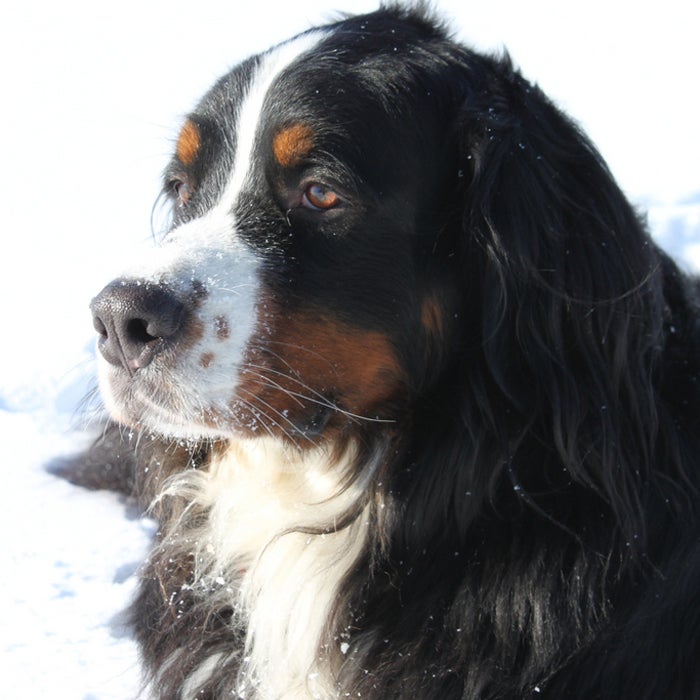
This dog has it all—strength, speed, and agility—but will still be completely devoted to its owner with its gentle temperament and low exercise needs. The breed, originally bred as a drafting and driving dog in Switzerland, is sturdy and large enough to carry it's own gear–and some of yours, too.
15. Chow Chow
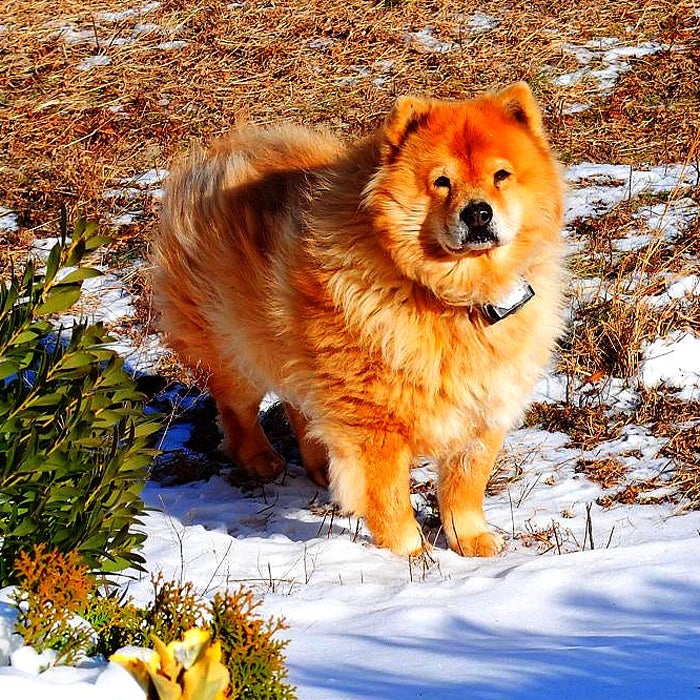
Chow Chows are perhaps best known for their black tongues and wooly coats, which make them extremely tolerant to cold temperatures. "If you love the outdoors and are owned by a Chow Chow, then you should take him or her everywhere you go in the snow," says Pat Foose, co-owner of Colorado-based Pendleton Chows. "Chows are most delighted when with their humans."
14. German Shepherd
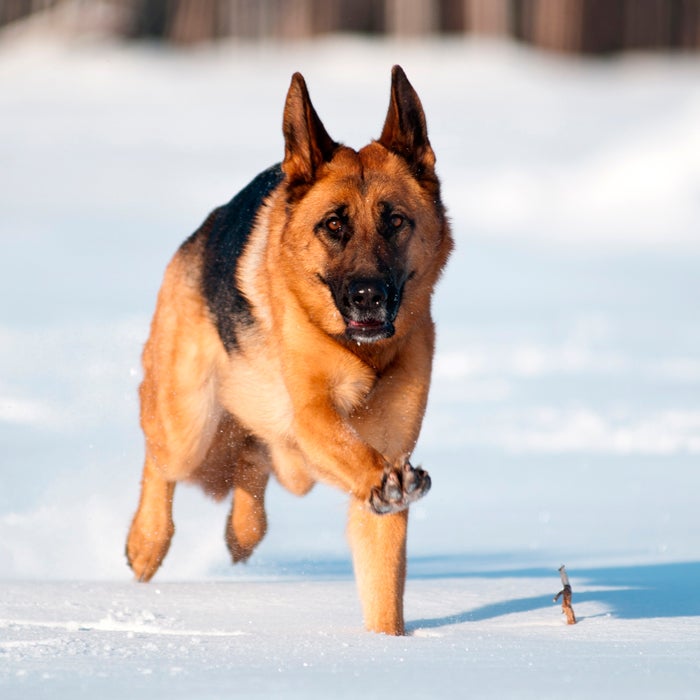
The breed's popularity grew with Rin Tin Tin, the abandoned German Shepherd pup found during WWI who went on to star in TV shows and movies. Known for their herding, guarding, and police work, German Shepherds are strong, agile, hard workers that have a lot of energy and learn quickly. This breed commonly suffers from hip dysplasia, which can likely be avoided by buying from a credible breeder.
13. Greater Swiss Mountain Dog
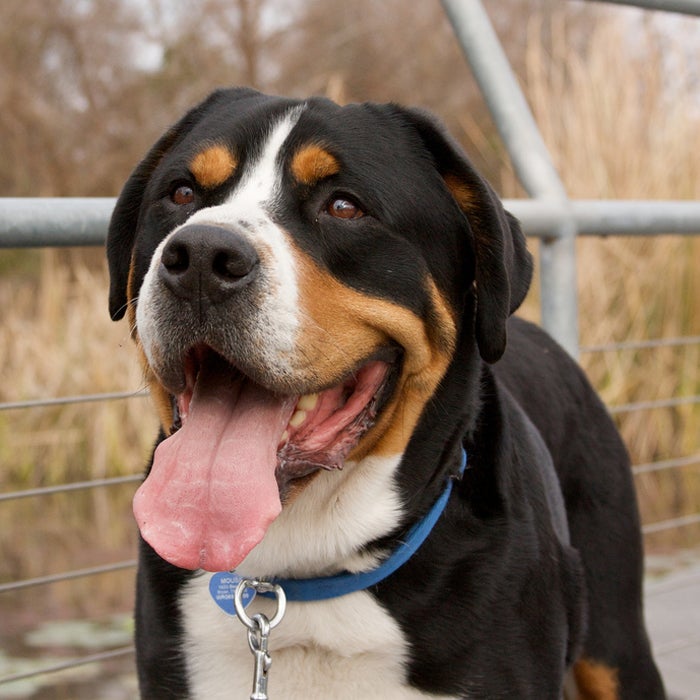
The Swissy was originally known as the "poor man's horse," and used as a draft dog for farmers, herdsmen, merchants, and even the Swiss during the second World War. A large and powerful breed weighing 85 to 140 pounds, this dog has a gentle attitude and moderate exercise needs, although they will eagerly hike, cart, herd, and backpack.
12. Great Pyrenees
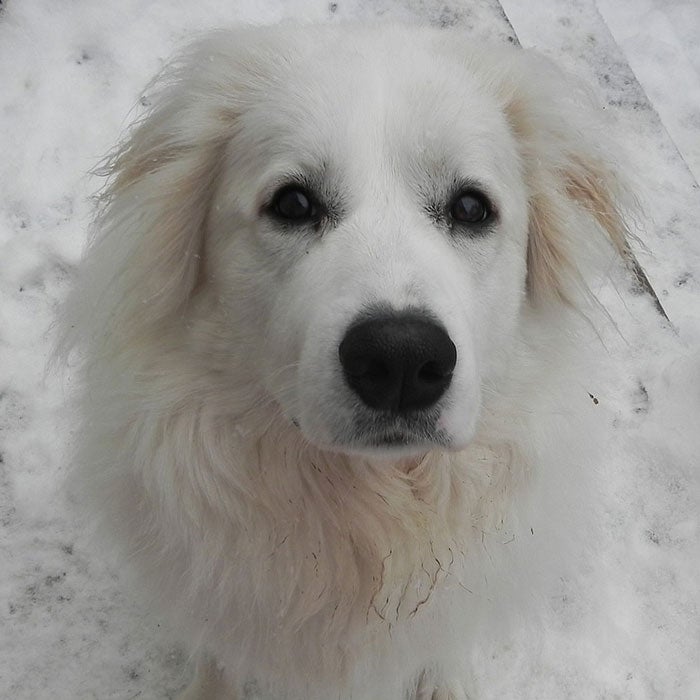
The Great Pyrenees were once used to herd livestock on steep mountain slopes of France and will eagerly embark on a tough, rugged hike. These dogs, which weigh in at 80 to 100 pounds, are elegant and calm—they were, after all, the Royal Dog of France. "They are the gentlest of the guarding breeds, the longest living on the whole of the giant breeds, and are easy to care for," says Carrie Stuart Parks, president of the Great Pyrenees Club of America. "They love winter. Their thick, double coat protects them from all but the most artic of temperatures."
11. Karakachan Bear Dog
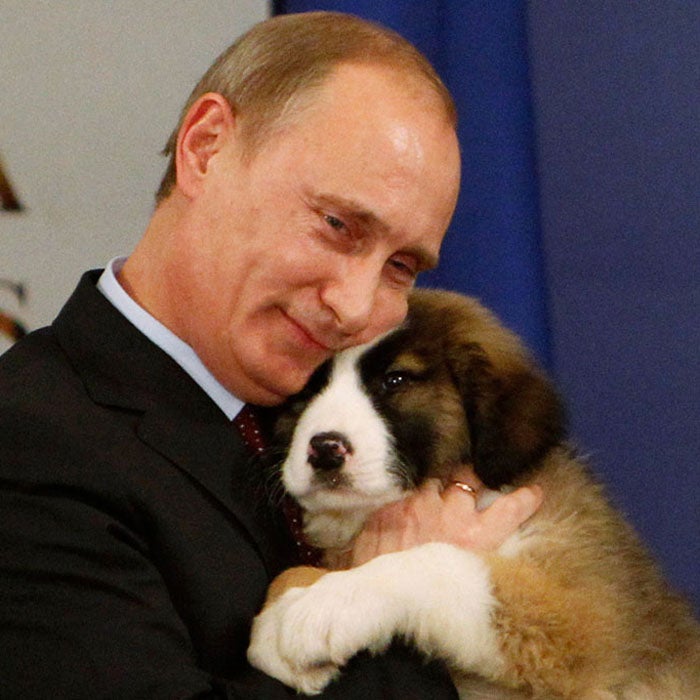
Vladimir Putin has owned his Karakachan, Buffy, since 2010. How long have you had yours?
(Jedimentat44/Flickr)Also known as the Bulgarian Shepherd, the Karakachan Bear Dog (right) is a natural livestock guardian and working dog, but still makes for a loyal pet with protective instincts. This smart dog ranges from 80 to 120 pounds and loves to be outside in open spaces, not cooped up inside all day. In fact, these dogs often won't seek shelter in rain or snow, preferring to sleep outdoors.
Vladimir Putin has owned his Karakachan, Buffy, since 2010. How long have you had yours?
10. Keeshond
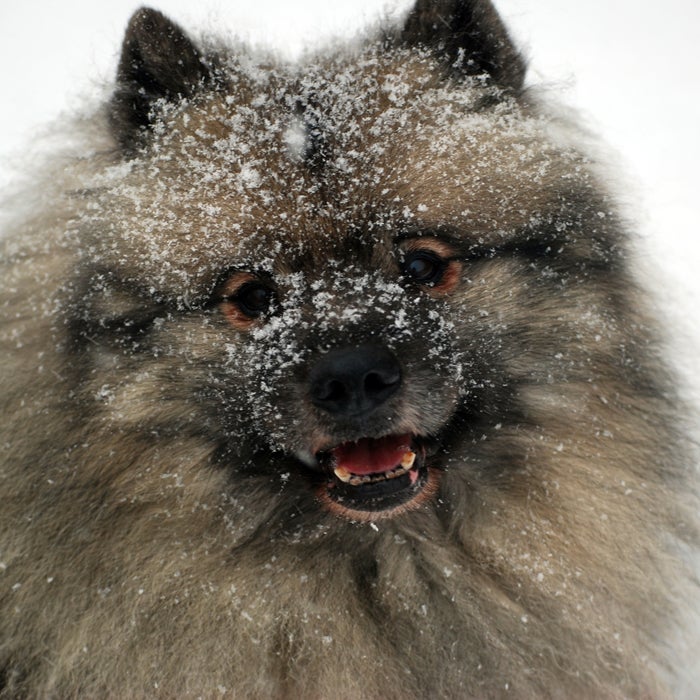
The thick fur and downy undercoat on this super affectionate pooch create insulation from harsh temperatures and damp climates, and its color pattern often gives it a pair of "spectacles." "The Keeshond has a very thick coat that kept it warm when it served as a watchdog on riverboats in Holland," DiNardo says. At one point, the Dutch Patriot Political Party even used the Keeshond as their mascot. The Keeshond is friendly, learns quickly, and is readily active, but is still okay with taking it easy at home as a friendly pet. These pooches need quite a bit of exercise, or else they'll end up spinning in circles, literally.
9. Kuvasz
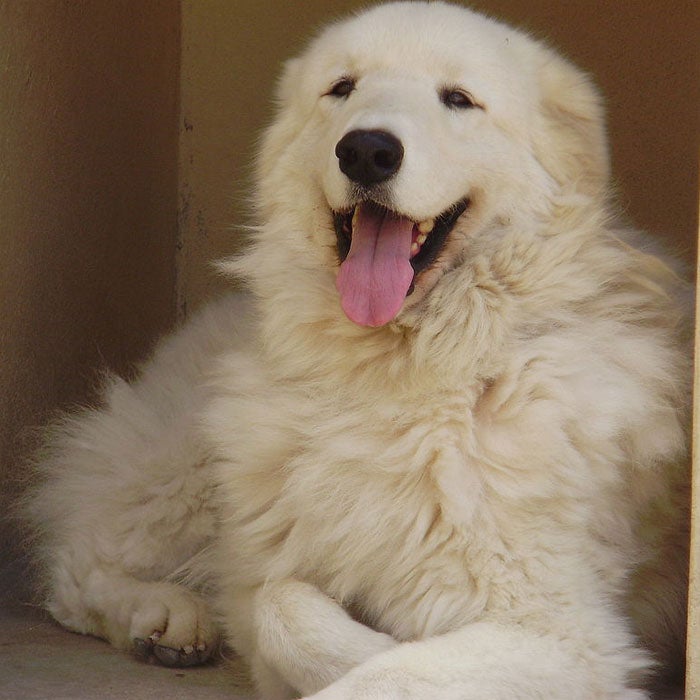
To be considered a true Kuvasz, this dog must always sport white fur, according to the American Kennel Club. Originating in Tibet, the Kuvasz—which means "armed guard of nobility" in Turkish—was later owned by the royal family in Hungary before finding a more "common" lifestyle as a light-footed hunter and herder. The Kuvasz's double coat makes it a perfect mountain dog, and its trainability and fearless protective instincts provide a perfect four-legged companion. A fenced-in, open yard works best for this energetic, yet possibly destructive, breed.
8. Newfoundland
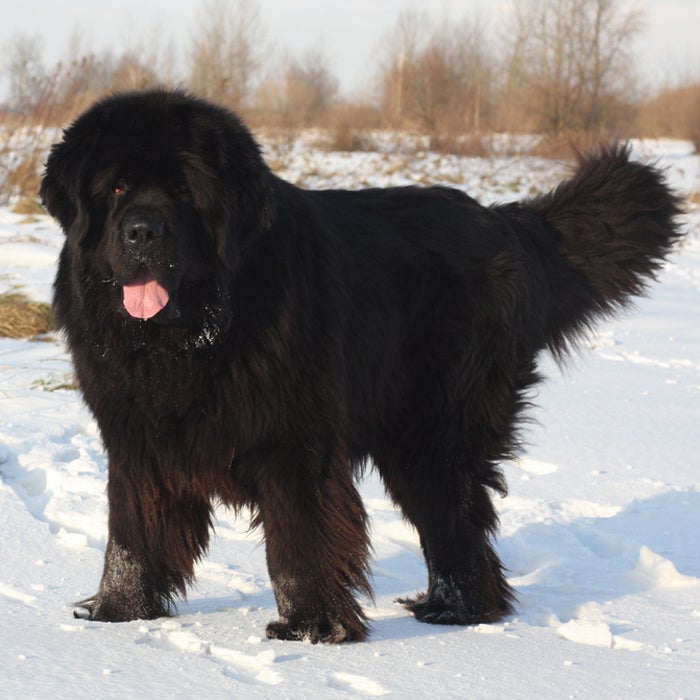
The perfect family dog, Newfies have low energy, but come chock full of friendliness and protectiveness. This breed is calm and patient, and can weigh up to 150 pounds. "The Newfoundland has a heavy coat that protected it from the icy waters it was originally bred to work in, making it ideal for colder weather," says DiNardo. These Canadian dogs are still used in water rescues today, but don't be fooled by their swimming skills—a double coat and a strong body make it ideal for mountains, too. And although these gentle giants barely ever bark, they do drool…a lot.
7. Norwegian Elkhound
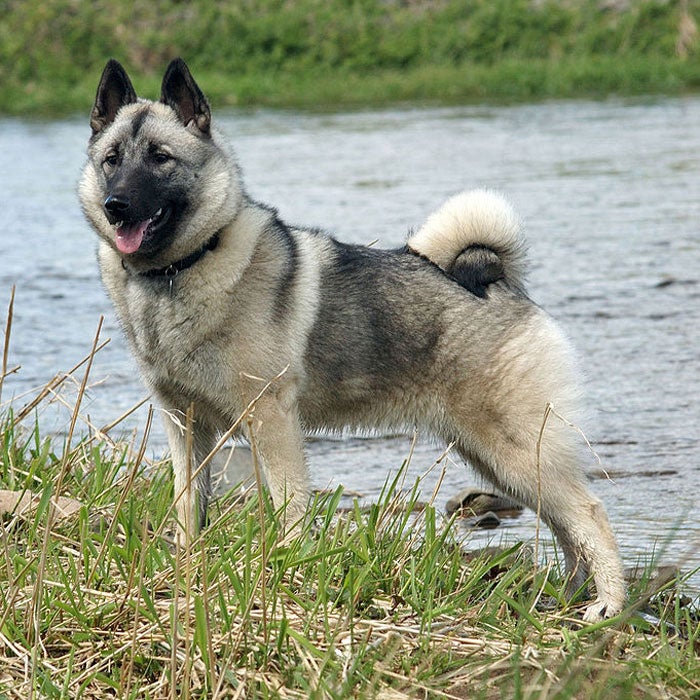
An ancient breed from Scandinavia with Nordic traits, the Norwegian Elkhound is used to hunting in the cold climate it came from," says DiNardo, adding that these characteristics have stayed with the breed. Always ready for adventure—especially in the snow—the high-energy Norwegian Elkhound has a smooth outer coat and a wooly undercoat. The breed was originally used for hunting elk, but now are perfect hiking dogs with high agility, lasting endurance, and a penchant for protecting their owners.
6. Saint Bernard
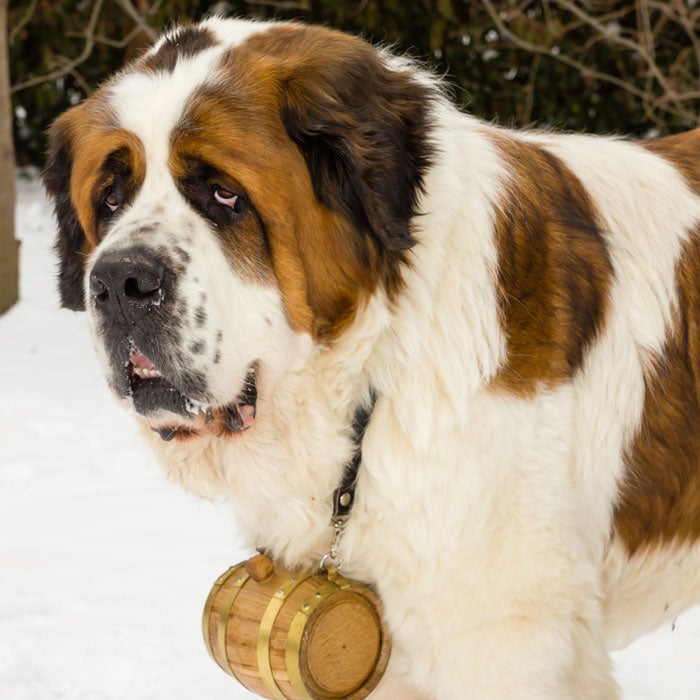
Saint Bernards became (more) famous when the beloved, super slobbery, trouble-making Beethoven hit the big screen in the 1992. Not all Saint Bernards cause so much disaster, but they are really that big—120 to 200 pounds. Saint Bernards have low energy and aren't necessarily super playful, but they make up for it with affection and willingness to work—the muscular dogs will trek for miles through deep snow to search for lost travelers.
5. Samoyed
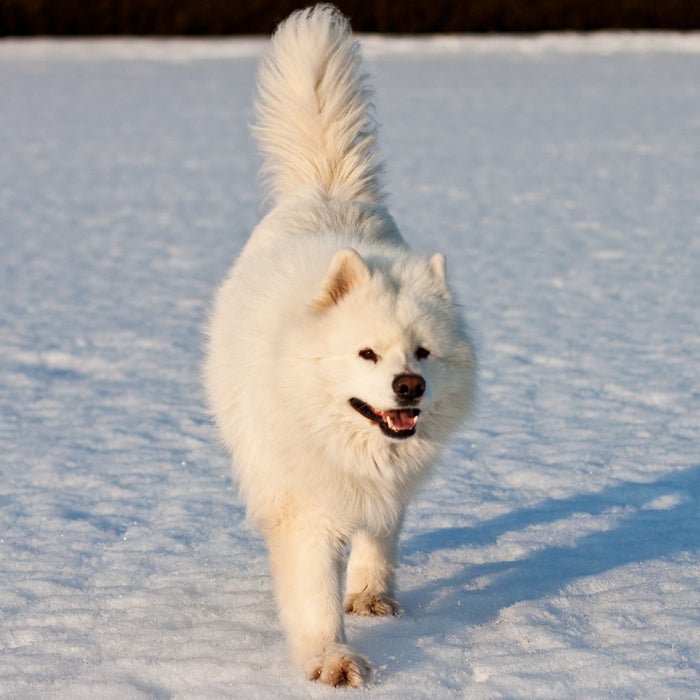
Who doesn't want to wake up to the "Samoyed Smile" everyday? These playful, yet gentle dogs are perfect as companions, but need plenty of physical and mental exercise. The Samoyed, from Siberia, was originally bred for herding reindeer, hunting, and hauling sledges, says DiNardo. Now, its compact build mixed with an agile grace make it a strong, fun breed.
4. Shiba Inu
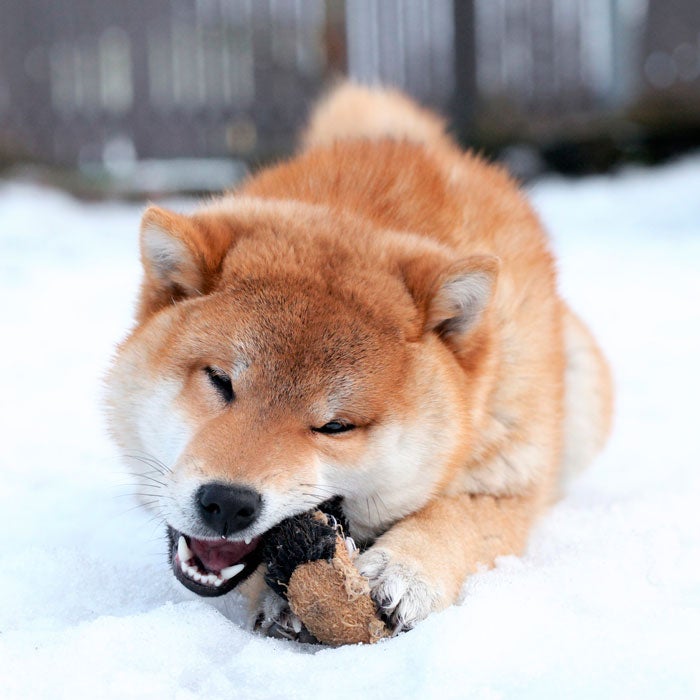
Shiba Inus have thick fur and a double coat. These confident dogs are quite spirited, very vocal, and always ready to explore. "Goku absolutely loves the snow," says one owner of a two-and-a-half year old Shiba. "I call it romping—he romps all day. I have countless videos of him swimming in the snow, and he loves searching for things in the snow, too."
3. Siberian Husky
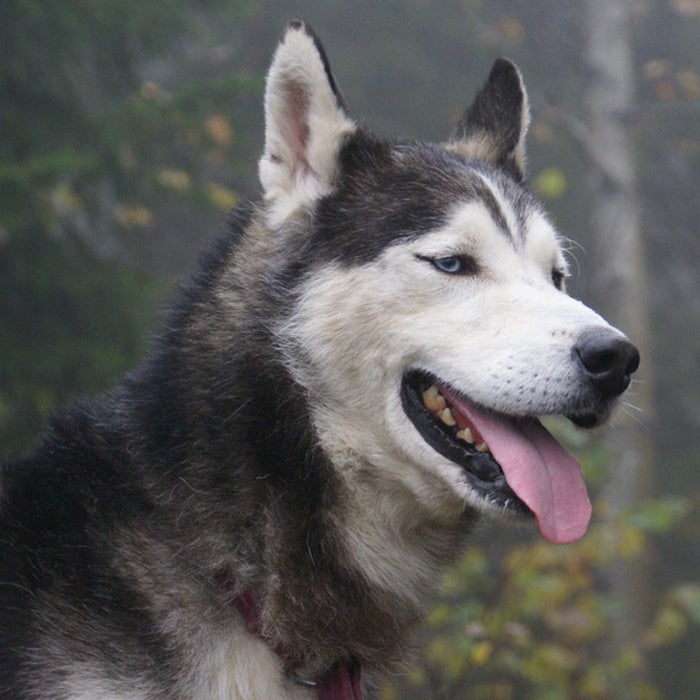
Originating from Northeast Asia, the Husky is another breed that is used for dog sledding. "The huskies that I have worked with have been very vocal," says Cruz, who has worked with arctic dogs as a trail vet for the multiple sled dog races. "They do shed, but the degree is a function of environmental factors and overall health. They do need a great deal of exercise to stay mentally and physically healthy."
2. Tibetan Mastiff
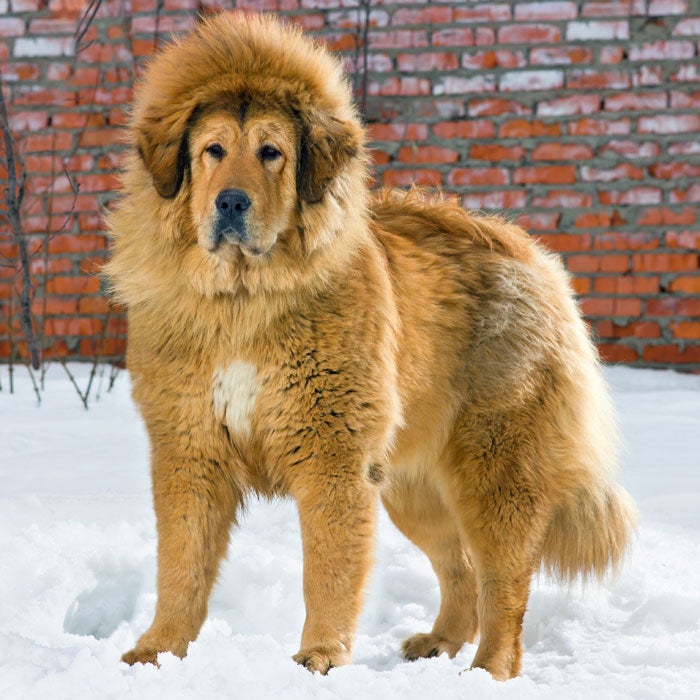
Tibetan Mastiffs, which were once isolated in the Himalayas, are comfortable in both cold and warm temperatures—they have an immense double coat that keeps them insulated, says DiNardo, with the undercoat heavier in the winter but lightening up in the warmer months. Most often Tibetan Mastiffs are black or brown in color, but the Red Tibetan Mastiff is said to be the world's most expensive dog; one pup sold for $1.5 million. Recently, this pooch was mislabeled as an African Lion in a China Zoo—visitors were not pleased when the lion started barking.
1. Tibetan Terrier
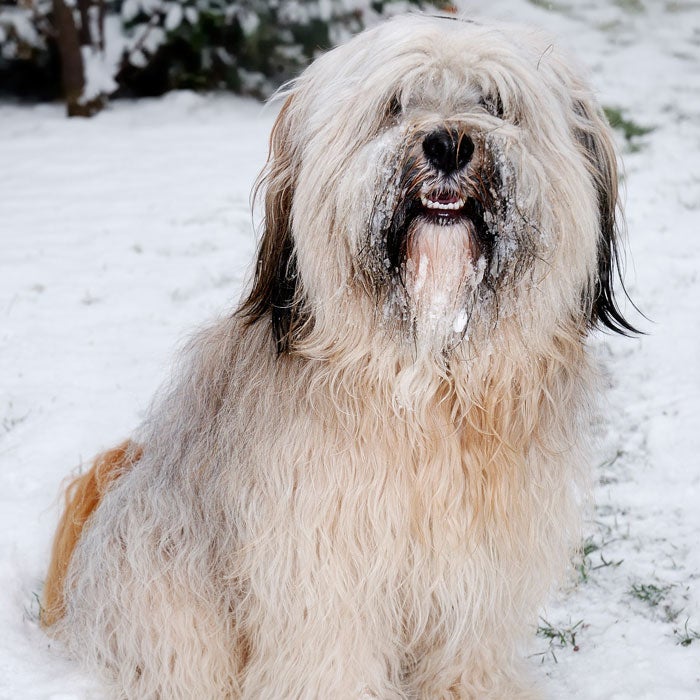
Don't let their size fool you. Tibetan Terriers, originally bred and raised in monasteries 2,000 years ago, make for excellent outdoor companions. Kept as good-luck charms and watchdogs, and originally used for herding sheep as well as retrieving items that off mountainsides, Tibetan Terriers are agile, excellent in the snow, and love to climb.
(Manfred Angermayr/Thinkstock)The Tibetan Terrier is built to withstand the extreme climate and terrain of its home country of Tibet, says DiNardo. The dogs have large, flat, round feet that provide traction in heavy snow—much like snowshoes—and a protective double coat. This breed is gentle and makes for a great companion both on outdoor adventures or relaxing on the couch.
Don't let their size fool you. Tibetan Terriers, originally bred and raised in monasteries 2,000 years ago, make for excellent outdoor companions. Kept as good-luck charms and watchdogs, and originally used for herding sheep as well as retrieving items that off mountainsides, Tibetan Terriers are agile, excellent in the snow, and love to climb.
What Weather Is Too Cold for Dogs
Source: https://www.outsideonline.com/outdoor-adventure/snow-sports/20-best-cold-weather-dog-breeds/

0 Response to "What Weather Is Too Cold for Dogs"
Post a Comment